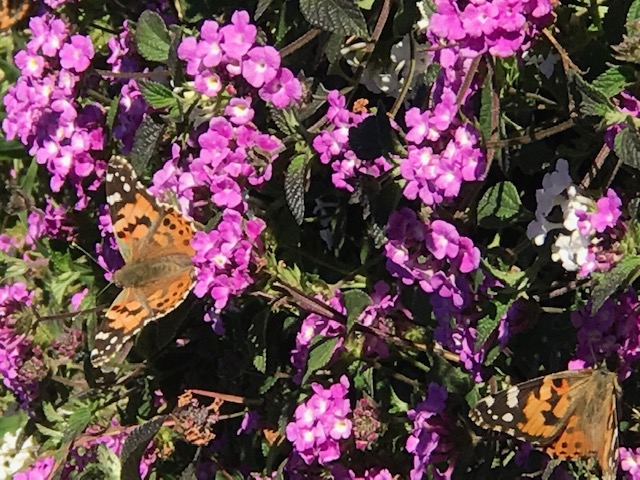
Painted Lady butterfly migration sets skies aflutter

Painted lady butterfly migration sets Californian skies aflutter
Photo of Painted Lady on Westshire Drive courtesy of Jean Clyde Mason
By Phil Helsel, Reporter for NBC News
Southern California is all aflutter thanks to an annual migration of butterflies known as the painted lady. In recent days, the skies of some areas have been filled with the winged creatures.
People took to social media to document the insects fluttering around California. The butterflies travel from the deserts in Mexico and fly as long as their fat reserves last before breeding. Generations of the insects can reach all the way to the Pacific Northwest.
“We’ve been waiting for them to get up here, but they haven’t shown up yet,” said Arthur M. Shapiro, a professor at the University of California, Davis’ Department of Evolution and Ecology, College of Biological Sciences, which is near Sacramento.
“Years of tremendous wildflower blooms typically are really big painted lady years,” he said, adding that the last really big one was in 2005 with estimated billions of butterflies.
Shapiro said he’s gotten reports of the butterflies, Vanessa cardui, in Temecula, north of San Diego, and in Anza-Borrego Desert State Park, as well as in Pasadena and in the Coachella Valley.
The entire North American population of painted lady butterflies migrates to west Texas and northern Mexico during the winter. As caterpillars, they feed on desert annual plants — their favorites are the families of mallows, borages, and thistles and their relatives — and then once butterflies, they begin traveling north.
They can live up to six weeks, but most don’t live that long. There will be waves of migration as the first generation makes it to northern California, they breed and then the next generation makes the trip to the Pacific Northwest, Shapiro said.
On the way back, the next generations of butterflies will begin making the trip south. In Calfornia, the largest number of butterflies are expected on the eastern side of the Sierra Nevada, Shapiro said.
